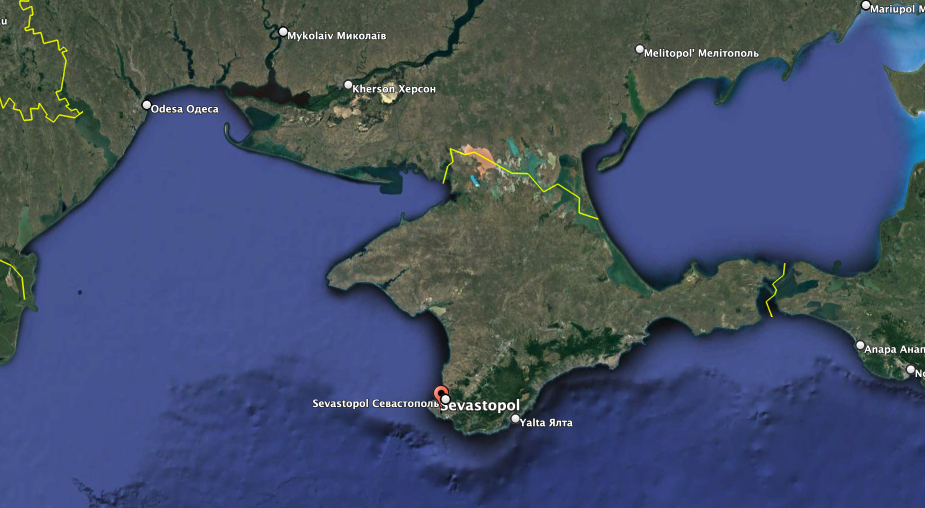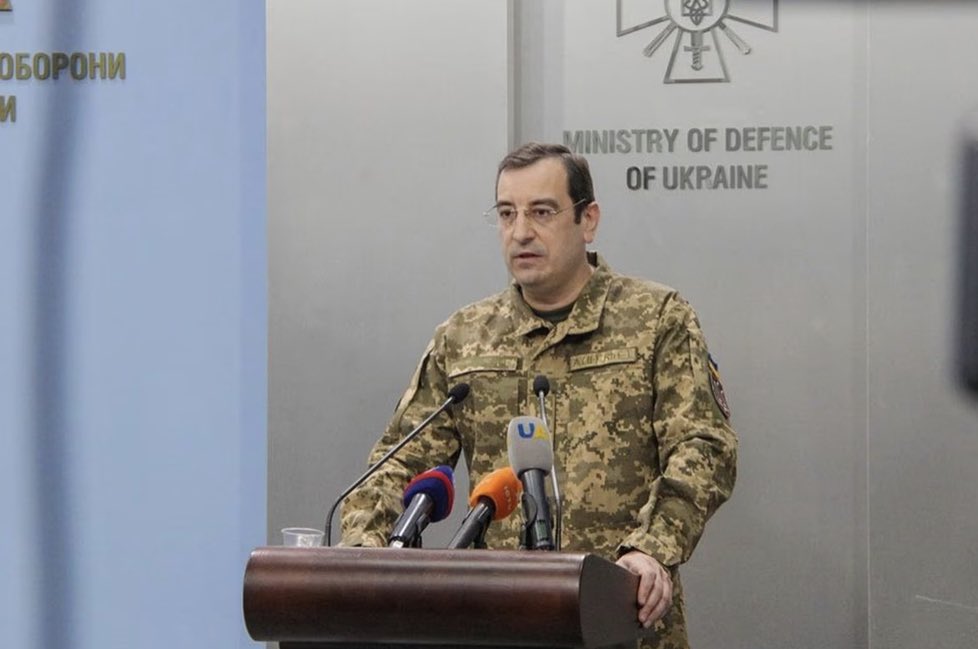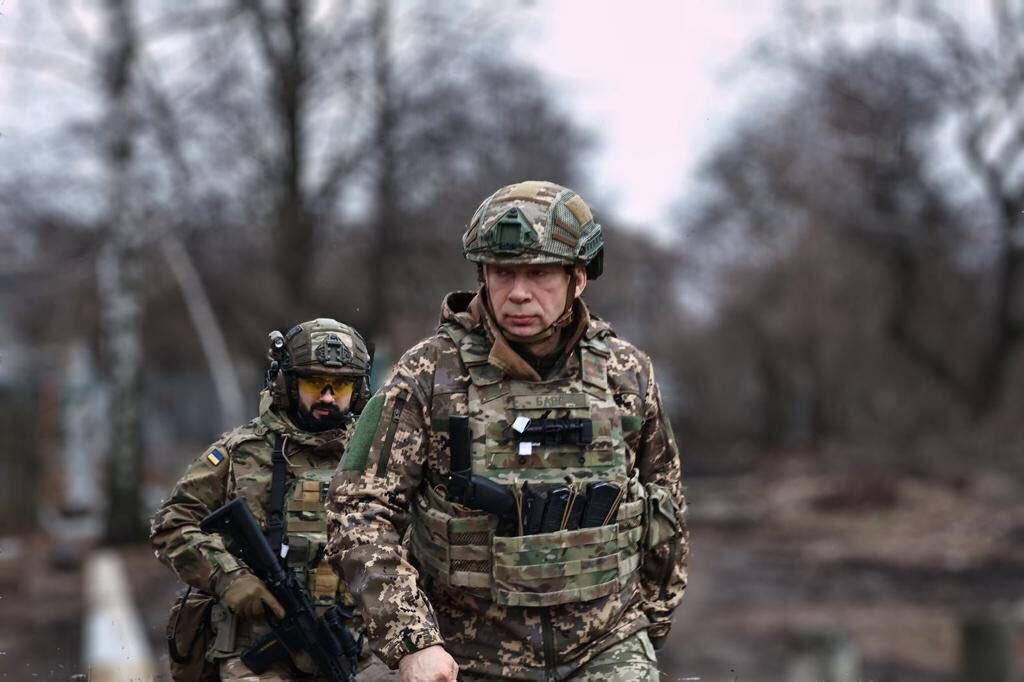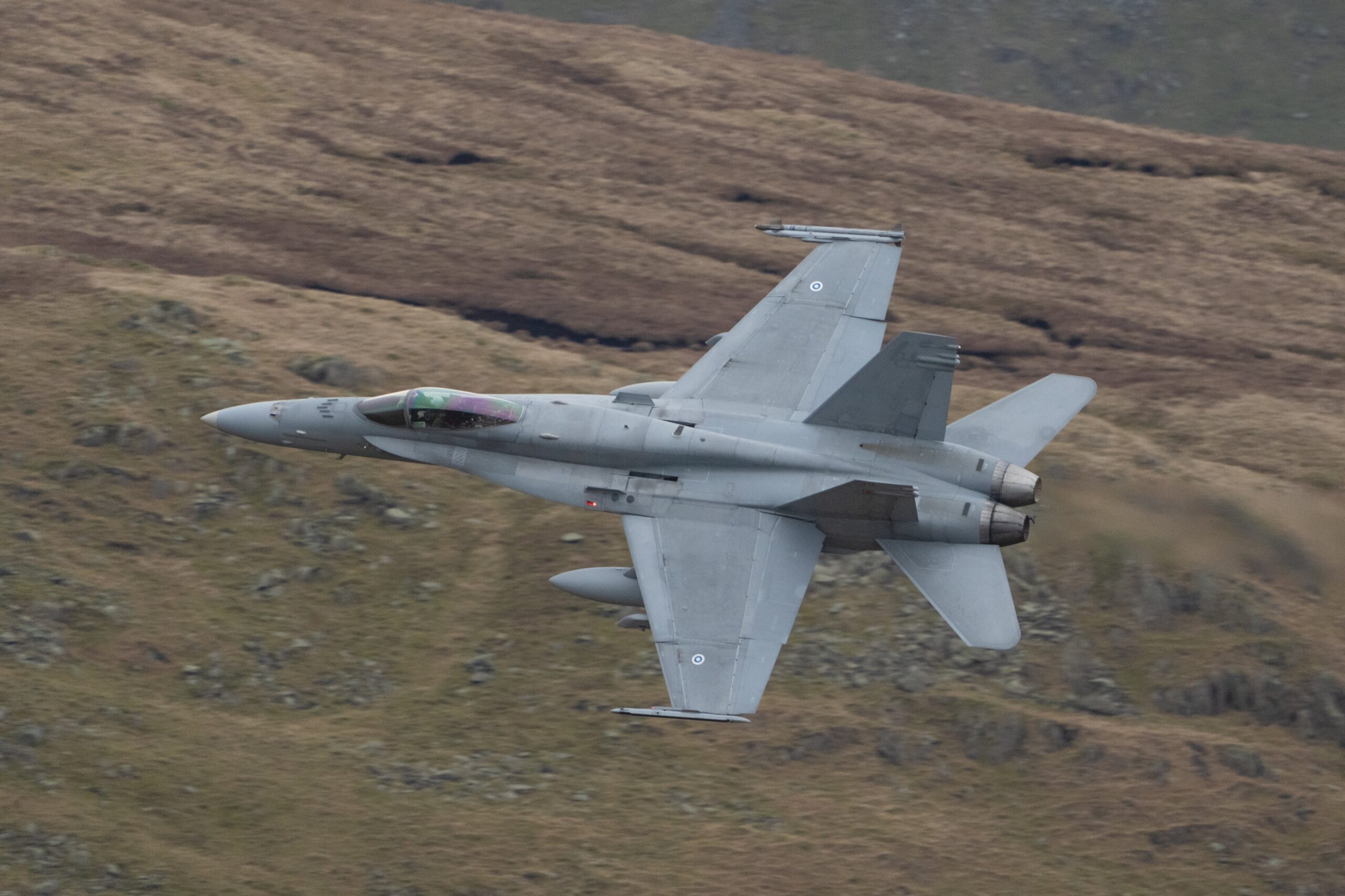We are getting what appear to be new views of the three Ukrainian uncrewed surface vessels (USV) that took part in a multi-domain attack on Sevastopol, home of Russia’s Black Sea Fleet, on Wednesday.
The grainy, black-and-white video, set to techno music and first posted on Telegram, splices together several angles of the USVs attempting to enter the largest harbor on the occupied Crimean peninsula. As the USVs approached the harbor, some appear to have encountered an obstacle. One of the USVs hit the obstacle and exploded, while two others may have jumped over it, traveling further into the harbor. But apparently, both exploded before they could hit any targets. Yesterday, a video, which is also seen at the end of this montage, looks like one explosion on the harbor may have been caused by a friendly fire ricochet.
Regardless, assuming the videos are legitimate, and match the general account of what happened, they offer a new view of the operation and Russia’s response to it.

Russia has built up layered defenses in the air, on land, and at sea around the harbor in Sevastopol, especially at its entrance. These have only gotten more elaborate after repeated drone attacks of increasing sophistication.
In addition to the USVs, the Russian-occupation governor claimed Sevastopol was also attacked by aerial drones as well. Ukraine, as we have written before, attempted a similar large-scale attack in October. You can read more about that operation here. Thanks to a fundraising campaign last fall, we got our best look yet at Ukraine’s USVs.
But there appears to be a new batch of Ukrainian USVs in the works.
Pictures of the USVs were posted on Twitter by Ukrainian volunteers Serhii Sternenko and Ihor Lachenkov the same day as the Sevastopol attack.
The photos show two drones named “Bakhmut” and “For Raccoon,” according to the Defense Industry of Ukraine.
“Presumably, [the] drones have a warhead and will be used as strikes against Russian naval targets,” the organization claimed. However, it is unclear if those USVs are even operational yet, let alone connected to Wednesday’s attack. We reached out to the two volunteers and will update this story with any information they provide.
Before we head into the latest news from Ukraine, The War Zone readers can get caught up on our previous rolling coverage here.
The Latest
Drone boats aren’t the only vessels engaged in the war.
The Dnipro River continues to see small boats used by both sides, an example of which we profiled back in January.
New video emerged of Russian troops trying to cross the river in a rubber raft. They were immediately spotted by Ukrainian forces and shelled.
Though it used Iranian-made Shahed-136 drones in deadly attacks on Ukraine earlier this week, Russia has only about 200 left, according to the Ukrainian Defense Intelligence Directorate (GUR).
“According to our calculations, they still have a stock of the batches they received at the end of last year and at the beginning of this year,” Vadym Skibitsky, deputy chief of the GUR, told the Ukrainian RBC-Ukraine media outlet Thursday. They probably still have about 200 units of “shaheeds” left. But they don’t use them as massively as before. This confirms that they do not have a large stock – they save.”

Still, the Ukrainian Defense Ministry on Wednesday said “the enemy launched another massive air strike by the ‘Shahed-136’ UAV. According to preliminary information, 16 drones out of 21 launched by the enemy were destroyed by our defenders.”
At least seven people were killed and nine injured in a drone attack on two dormitories and an educational facility in Rzhyshchiv, 40 miles south of Kyiv, regional police chief Andrii Nebytov said on his Telegram channel Wednesday.
However, it is hard to gauge just how many drones Russia has left. There have been previous claims by Ukraine that Russia was running out of Iranian drones. And in January, Skibitsky said Russia contracted with Iran for 1,750 drones.
Russia receives the drones from Iran in batches of about 250 to 300 and has used about 800 so far, Skibitsky told RBC-Ukraine Thursday.
“However, we do know that they will be trying to get their production of these drones up and running. We clearly understand where they plan to do it and how.”
But doing so will be a challenge thanks to ongoing sanctions against Russia, Skibitsky said.
“A drone is a fairly simple thing to manufacture. Here, the main thing is not even so much production, but components – optics, microcircuits, chips, power elements and others. And if we and our partners know how these components are delivered, it will be difficult for Russia to get them in large quantities. Unless to circumvent sanctions, smuggling, through third countries.”
While the previously discussed provision of Iranian ballistic missiles to Russia seems to be on hold for now at least, Skibitsky said that Tehran has helped Moscow with artillery ammunition.
“According to our data, Iran has already supplied individual components for the manufacture of ammunition,” he said. “Russia has plans and hopes to purchase 122mm and 152mm ammunition, as well as ammunition for small arms. They would also like other things, such as ballistic missiles, but it will depend on Iran’s decision whether it will agree to supply them to Russia. After all, the entire international community will know” who supplied the weapons. “In addition, after the arrest warrant [for Russian President Vladimir Putin], it will now be interpreted as helping a war criminal.”
But Russia is not the only side receiving Iranian arms.
Ukraine’s Air Force is reportedly also using Iranian munitions, according to the Ukraine Weapons Tracker OSINT group. On Thursday, it posted what it says are recent images of S-80F high explosive fragmentary rockets, also known as Fadak 2, being prepared for use by a Mi-17 V5 helicopter once used by the Afghan Air Force.
It’s just the latest in a number of instances of Iranian weapons being used by Ukraine.
Last month, the group shared video footage showing Ukrainian soldiers using Iranian-made 125mm OF19 tank ammunition. Ukraine Weapons Tracker suggested that the tranche of Iranian ammo was most likely purchased through a third party and then provided to Ukraine.
More Iranian weapons could be on the way to Ukraine if the U.S. opts to send Kyiv thousands of assault rifles, 1.6 million rounds of small arms ammo, and more seized from smugglers. The story was first reported by The Wall Street Journal.
The Pentagon on Thursday told The War Zone it could not confirm the transfer of seized Iranian arms to Ukraine.
“We don’t have anything to confirm regarding the reports of seized Iranian weapons being transferred to Ukraine, but the U.S. position on Russia’s brutal war remains clear,” Marine Lt. Col. Garron Garn, a Pentagon spokesman, told The War Zone on Thursday. “Russia’s war in Ukraine is a violation of international law and serves as a threat to global peace and security. The United States will support Ukraine for as long as it takes in the face of this unprovoked war of aggression.”
On the battlefield, a Ukrainian general gave a sly hint of things to come.
“Very soon, we will take advantage of the losses of the Russian Federation at Bakhmut,” Colonel-General Oleksandr Syrskyi, commander of the Ground Forces of the Armed Forces of Ukraine, said on his Telegram channel Thursday.
“The aggressor does not give up hope of taking Bakhmut at any cost, despite losing manpower and equipment. The main forces of the Russian Federation in this direction are representatives of the Wagner PMC. They spare nothing; they lose significant forces. Very soon, we will take advantage of this opportunity, as we once did near Kyiv, Kharkiv, Balaklia, and Kupiansk.”
Syrskyi, however, offered no specifics.

Speaking of Wagner, it’s capo di tutti capi Yevgeny Prigozhin pushed back on a Bloomberg report that he was shifting his group’s emphasis to Africa after suffering huge losses in Bakhmut and failing to obtain ammo, troops and supplies from Moscow.
“Seen as an increasing threat by the security and political establishment, Prigozhin is struggling with a manpower and ammunition shortage in Ukraine after he was barred from recruiting from prisons, his primary source of recruits, and deprived of supplies,” Bloomberg reported. “Wagner troops so far have failed to take their main target – the Ukrainian city of Bakhmut – despite months of trying and staggering losses. Now, Prigozhin is planning to shift focus back to Africa,” Bloomberg said its sources told them.
But Prigozhin denied that.
“As long as our country needs us, we are fighting on the territory of Ukraine,” he said on his organization’s Telegram channel.
In a move bound to raise hackles in Moscow, four Ukrainian pilots climbed into MiG-29 Fulcrum fighter jets in Slovakia and flew them home to join their air force, the Slovakian Ministry of Defense (MoD) announced Thursday.
The Fulcrums were the first tranche from a total of 13 promised last week by Slovakia to Ukraine, which has had dire need of combat aircraft since the full-scale Russian invasion began.
You can read more about that in our coverage here.
Finnish Defense Minister Antti Kaikkonen on Thursday expressed his opposition to Ukraine’s request for a portion of his country’s F/A-18C/D Hornet fighter jet fleet.
“My view as Finland’s defense minister is that we need these Hornets to secure our own country,” Kaikkonen told a news conference in Helsinki, as reported by Reuters. “I view negatively the idea that they would be donated during the next few years. And if we look even further, my understanding is that they begin to be worn out and will have little use value left, he added.”
The request for Hornets was part of Kyiv’s continuing efforts to bolster its air force which has suffered significant losses in the wake of the full-scale Russian invasion. While the first donated Soviet-era MiG-29 Fulcrum fighter jets have reportedly now arrived in Ukraine, Kyiv’s hopes to acquire modern Western combat aircraft to supplement these have so far come to nothing.
News of a formal Ukrainian request for the Hornets was reported by the Finnish daily newspaper Helsingin Sanomat. According to this report, Ukraine approached the Finnish Ministry of Defense with a view to launching trilateral discussions between Finland, Ukraine, and the United States.
While the newspaper did not specify its sources, it did state that the request to the defense ministry was directed to a “not very high-level military official managing aid to Ukraine, not directly to the ministers or the Finnish government.”
The possibility of some of Finland’s 62 Hornets being provided to Ukraine first came up earlier this month, during Prime Minister Sanna Marin’s visit to Kyiv. Finland is planning to replace these aircraft with F-35A stealth fighters, with deliveries of these jets scheduled to begin in 2025.

Today, one of Marin’s assistants provided Helsingin Sanomat with the following statement from the prime minister: “I have told President Zelensky that we can discuss the issue, but no promises have been made. I have also told that Finland has made a decision on the acquisition of new fighter jets and that we can discuss the use of the retiring equipment together with the state leadership, taking into account our geopolitical location.”
The transfer of Finnish Hornets to Ukraine would rely upon approval from the United States, as the original equipment supplier, with Washington so far having been resistant to Kyiv’s requests for U.S.-made fighter jets, on the grounds of potential escalation of the conflict.
Despite pressure from parts of Congress to yield to Kyiv’s fighter jet demands, the U.S. position would appear to be a substantial hurdle.
With Ukraine in dire need of artillery shells, European Union (EU) leaders endorsed a plan Thursday for sending Kyiv a million rounds within the next 12 months to help the country fight Russia, The Associated Press reported.
Earlier this week, EU foreign and defense ministers approved the plan for a fast-track purchasing procedure, according to AP. The leaders of the bloc’s 27 member nations gave it their political blessing at a summit in Brussels Thursday.
“Taking into account the security and defense interests of all member states, the European Council welcomes the agreement … to deliver ground-to-ground and artillery ammunition to Ukraine and, if requested, missiles,” the meeting’s conclusions on Ukraine read.
Ukrainian President Volodymyr Zelensky thanked leaders for the initiative earlier during a video call.
“I am especially grateful to those of you who are actively involved in the initiative proposed by Estonia and approved by all of you – to supply and manufacture shells for our artillery,” Zelensky said from a moving train. “The more often Ukrainian cannons hit the occupier – the less chance Russia has to implement its genocidal policy against Ukrainians and other Europeans.”
But he repeated his call for more long-range weapons.
“While every hour on the battlefield counts, the protraction in supplying long-range missiles to Ukraine is already significant. This does not allow us to roll back the positions of Russian terrorists, in particular from Kherson, Zaporizhzhia and our other cities, which are constantly shelled by Russian long-range missiles.”

A small unit of Ukrainian troops is fighting an asymmetric battle against Russian forces with the goal of maiming, not killing the, according to the Times of London.
“The 27 men of the Thor group are a tight band of brothers from across Ukraine who have fought together since they first gathered in Kyiv to defend the capital from Russian tanks in February last year when Putin ordered tanks and troops across the border,” the newspaper reported. “Formally a police special operations unit, they operate in close collaboration with Ukraine’s military intelligence, the GUR.”
The soldiers of Ukraine’s Thor special operations group planned their own attack on enemy positions. “These ones are to wound the Russians,” Aleksander, 30, told The Times. A massive, muscular fair-haired warrior from Kyiv, he fidgeted with a plastic container as he spoke, packed it with mining explosives and fitted tail fins to ensure it drops straight from its drone onto its detonator.”
“Take an arm or a leg, he will be a burden on the state forever. It’s better than killing them. He will remind the Russian people of the cost of Putin’s war. And that they might be next.”
War is not just hell, it’s noisy as hell, especially weapons like the Soviet-era DShKM heavy machine guns. Well, apparently, Ukraine has found a way to muffle the sound a bit, fashioning suppressors for the 12.7mm weapons.
And finally, some Ukrainian children taken by the Russians were returned home.
The illegal transfer of Ukrainian children to Russia was at the heart of why the International Criminal Court (ICC) in The Hague last week issued an arrest warrant for Russian President Vladimir Putin. The ICC accused Putin of war crimes for the illegal deportation and transfer of Ukrainian children to the Russian Federation. The ICC also issued an arrest warrant for Maria Lvova-Belova, Commissioner for Children’s Rights in the Office of the President of the Russian Federation, accusing her of the same war crimes.
You can read more about that in our story here.
That’s it for now. We will update this story when there’s more news from Ukraine to report.
Staff writer Thomas Newdick contributed to this report.
Contact the author: howard@thewarzone.com
